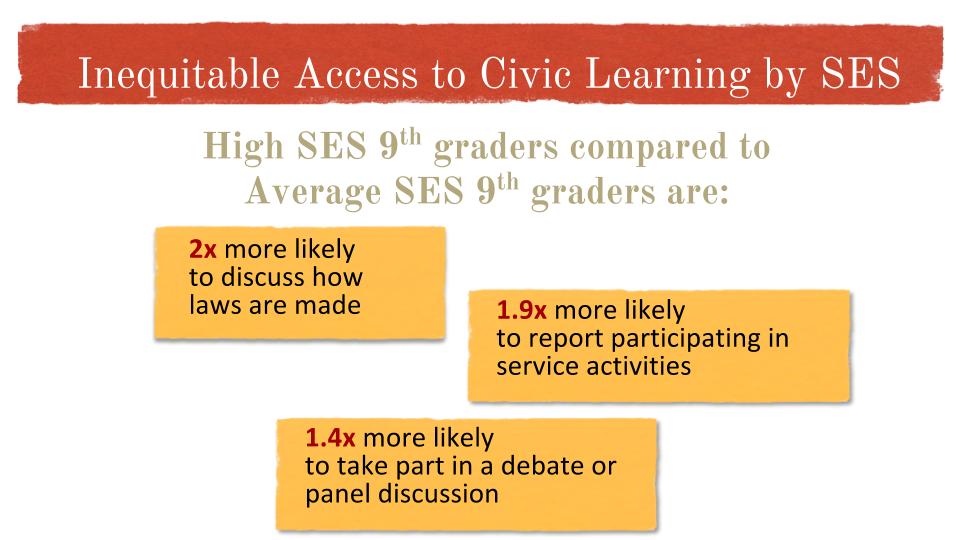Equity & Access
The Leveraging Equity and Access in Democratic Education (LEADE) initiative provides educational decision makers with research-based tools for assessing equity and access in civic education in order to improve civic learning opportunities in and out of schools for all students.
Unfortunately, civic learning opportunities are inequitably distributed. On average, white students, middle class students, and students in higher-track classes experience more classroom-based,3 after-school, and informal4 civic learning opportunities, and are much more likely to be engaged in extracurricular groups that support civic development.5
To read more about research on equity and access to civic learning, click here.


